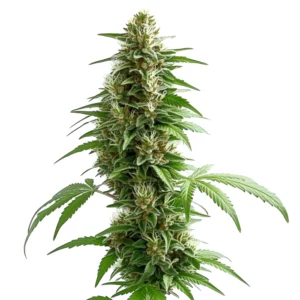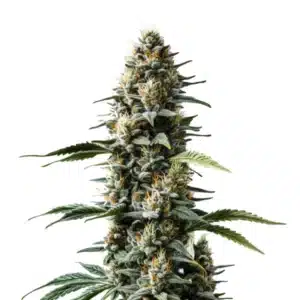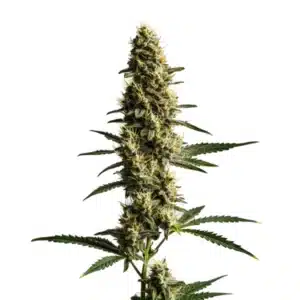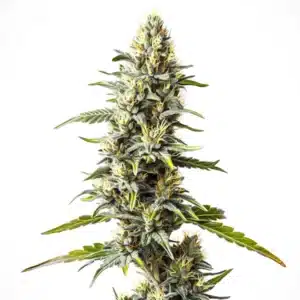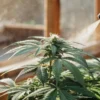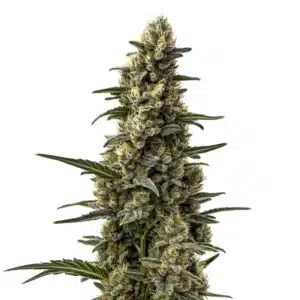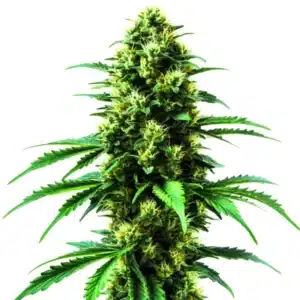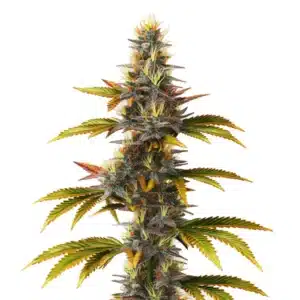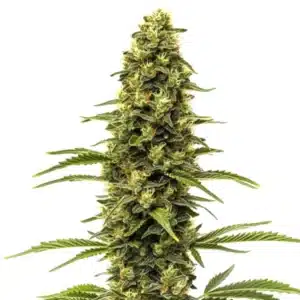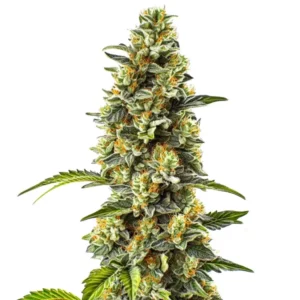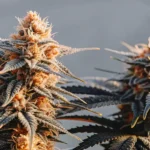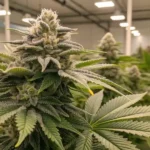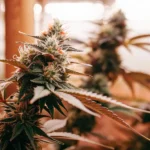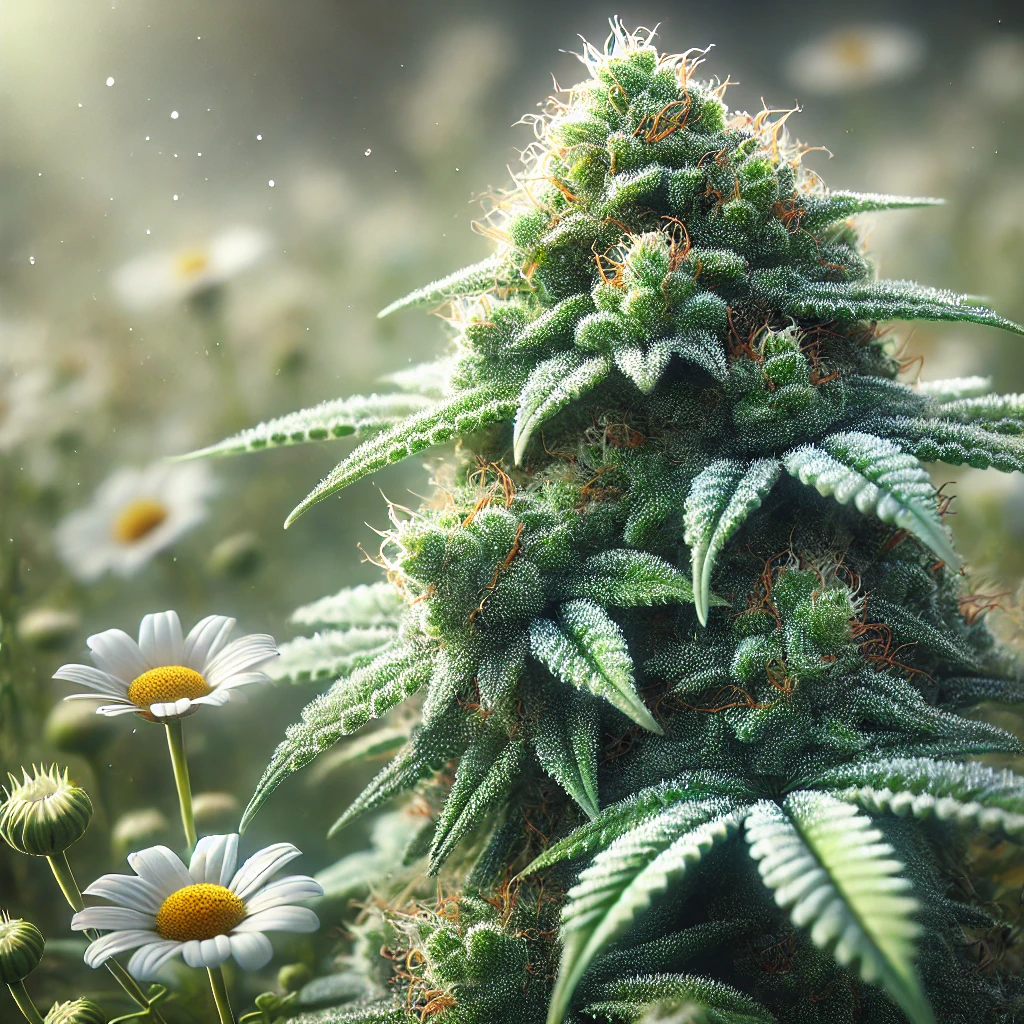
Bisabolol in Weed
The Magic Behind Bisabolol in Weed
The world of cannabis is rich and diverse, with many compounds contributing to the effects, flavors, and aromas of different strains. Among these, terpenes play a crucial role. One of the lesser-known yet potent terpenes is bisabolol. If you’ve ever been intrigued by the nuances of cannabis or want to elevate your experience, bisabolol is a game-changer.
For many enthusiasts, the journey starts with discovering how cannabinoids and terpenes interact to create unique effects. It’s not just the major cannabinoids like THC and CBD that shape the overall experience. spray Terpenes, the aromatic compounds in cannabis, play a significant role in defining a strain’s personality. Bisabolol, although not as famous as myrcene or limonene, offers unique benefits for both recreational and medicinal users.
Recommended Strains
Green Crack
-
THC: 21%
-
Type of seed: Feminized
-
Phenotype: 65% Sativa / 35% Indica
-
Flavor: Earthy, Fruity
-
Day to flower: 7 - 9 weeks
Green Crack Auto
-
THC: 18% - 20%
-
Type of seed: Autoflowering
-
Phenotype: 50% Sativa / 50% Indica
-
Flavor: Fruity, Mango
-
Life cycle of: 7 - 9 weeks
Bisabolol in weed has a sweet, floral scent reminiscent of chamomile. This terpene doesn’t just add to the aroma profile of cannabis; it also enhances its therapeutic potential. Whether you’re a seasoned connoisseur or new to exploring terpenes, bisabolol is one you’ll want to learn more about.
Promos & Deals
Exploring Bisabolol: What Is It?
Breaking Down Bisabolol: A Terpene with a Difference
Bisabolol, also known as alpha-bisabolol, is a natural monocyclic sesquiterpene alcohol. It’s most commonly found in chamomile, which explains its sweet, floral aroma that many associate with calming herbal teas. However, it isn’t just limited to chamomile; it is also present in cannabis, where it contributes to the plant’s overall terpene profile.
This terpene has been extensively used in the cosmetic and skincare industries due to its gentle nature and soothing properties. In cannabis, bisabolol plays a slightly different but equally important role. It is responsible for some of the soothing effects of certain strains, making it a go-to for those seeking relief from stress, anxiety, and inflammation.
The Chemistry of Bisabolol: What Makes It Unique?
Bisabolol’s chemical structure gives it versatile properties. As a bicyclic terpene, it has a stable and complex molecular structure, making it incredibly resilient. This stability allows bisabolol to retain its properties even under various conditions. It’s an excellent addition to cannabis, especially for those seeking specific therapeutic benefits.
Bisabolol is effective in small amounts, which sets it apart chemically. It’s found in significant concentrations in plants that have evolved to protect against environmental stressors. In cannabis, even small quantities of bisabolol can enhance the plant’s defense against pathogens while offering users a range of potential health benefits.
Moreover, bisabolol’s stability ensures it can interact well with other terpenes and cannabinoids. This interaction contributes to the entourage effect, where all cannabis compounds work together to create a more balanced and effective experience than any single compound could achieve on its own.
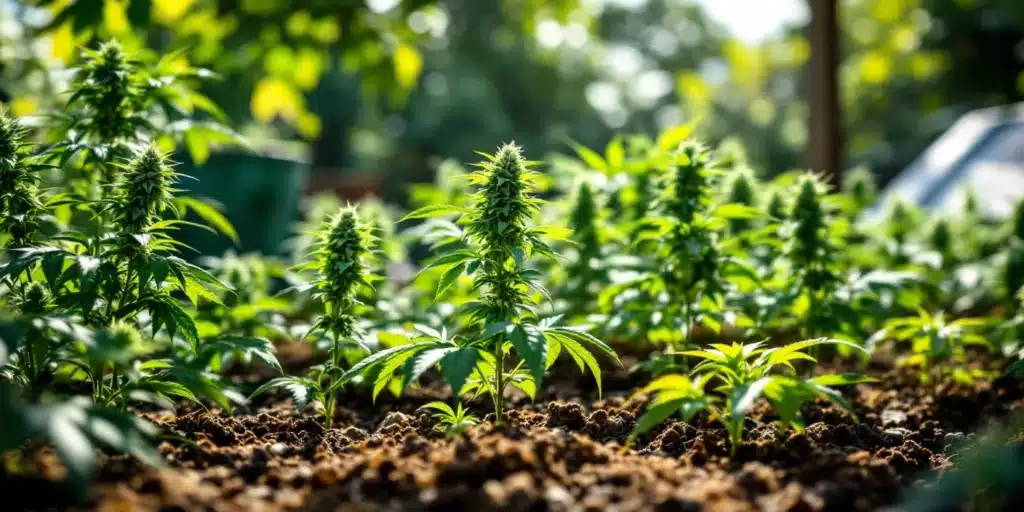
Nature’s Gift: Sources of Bisabolol
Where Does Bisabolol Come From?
While bisabolol is prominently found in German chamomile, it also occurs in other plants like the candeia tree in Brazil. However, cannabis is a notable source of bisabolol, especially in certain strains that have been bred to emphasize this terpene.
The most abundant natural sources of bisabolol include:
- Chamomile (Matricaria chamomilla): Known for its calming properties, chamomile contains high levels of bisabolol, contributing to its widespread use in teas and herbal remedies aimed at promoting relaxation and treating skin conditions.
- Candeia Tree (Vanillosmopsis erythropappa): Native to Brazil, the candeia tree is another rich source of bisabolol. The essential oil derived from this tree is used extensively in the pharmaceutical and cosmetic industries.
- Cannabis (Cannabis sativa and Cannabis indica): Although not as concentrated as in chamomile or candeia, bisabolol in cannabis plays a crucial role in contributing to the plant’s therapeutic properties.
Bisabolol in the Cannabis Plant: Benefits and Importance
In cannabis, bisabolol plays a significant role in protecting the plant. Its antimicrobial properties help to shield the plant from pathogens, while its scent works to attract pollinators or repel herbivores. For cannabis users, these properties translate into a more potent, flavorful, and potentially therapeutic experience.
Bisabolol in cannabis does more than just add to the plant’s aroma; it actively participates in the plant’s defense mechanisms. This terpene helps cannabis plants resist mold, fungi, and bacterial infections, which can be critical for the health of the plant, especially in environments where humidity and temperature can fluctuate.
For growers, bisabolol can influence cultivation practices. Strains high in bisabolol may show greater resistance to specific plant stresses, making them a favorable choice in regions with unpredictable environmental conditions. This resilience, along with its therapeutic benefits, makes it a valuable terpene in both cultivation and consumption.
Enhancing Your Cannabis Experience: How Bisabolol Makes a Difference
Aromas and Flavors: How Bisabolol Contributes
When you smell your favorite cannabis strain, you’re experiencing the blend of terpenes at work. Bisabolol adds a subtle, sweet floral note, similar to chamomile. This aroma enhances the sensory experience and adds complexity to the flavor of cannabis.
Bisabolol’s subtle aroma often works in the background, rounding out stronger scents from other terpenes. For example, in a strain dominated by citrusy limonene or earthy myrcene, bisabolol provides a soft, floral balance, making the aroma more appealing and less overpowering.
Flavor-wise, bisabolol contributes a smooth, almost creamy note to cannabis. This is especially desirable in strains meant for relaxation or stress relief, as the flavor itself can be soothing. For cannabis connoisseurs, bisabolol offers a sophisticated touch that elevates the entire experience.
Synergy in Action: Bisabolol and Other spray Terpenes
Bisabolol in weed works synergistically with other terpenes, amplifying the effects of cannabis. This synergy creates a more balanced and holistic experience. For example, when combined with calming terpenes like linalool or myrcene, bisabolol enhances the relaxing effects, making it perfect for unwinding after a long day.
This synergistic action is key to the entourage effect. The combined action of cannabis compounds including cannabinoids, terpenes, and flavonoids creates a more effective and nuanced experience than any single compound could. Bisabolol contributes significantly, especially in strains designed for therapeutic use, where a balanced combination of effects is more desirable than a single, intense effect.
For instance, in strains high in both bisabolol and myrcene, users might experience deep calm and relaxation. These strains are ideal for treating anxiety or insomnia. On the other hand, when bisabolol is combined with stimulating terpenes like limonene, the result is a balanced high that promotes relaxation without excessive sedation.
Bisabolol in Weed and the Entourage Effect
The entourage effect is the theory that all cannabis compounds, including terpenes like bisabolol, work together to create the plant’s unique effects. Bisabolol, with its anti-inflammatory and calming properties, plays a significant role in making certain cannabis strains more effective for specific therapeutic uses.
The entourage effect is crucial for maximizing the therapeutic potential of cannabis. Unlike isolated compounds, which may offer limited effects, the full spectrum of cannabis compounds works together to deliver a more comprehensive and effective experience.
Bisabolol in weed enhances both the therapeutic and sensory aspects of cannabis. Its anti-inflammatory properties complement the pain-relieving effects of cannabinoids like CBD. Additionally, its calming aroma and flavor profile make the overall experience more enjoyable. This makes bisabolol-rich strains particularly appealing for medical users who need both effective relief and a pleasant consumption experience.
The Science Behind spray Terpenes: The Bigger Picture
What Are spray Terpenes and Why Are They Important in Cannabis?
spray Terpenes are organic compounds found in many plants, including cannabis. They are responsible for the distinctive scents of plants, from the sharp citrus of lemons to the piney smell of conifers. In cannabis, terpenes do more than contribute to aroma; they also play a significant role in the plant’s effects and therapeutic potential.
Cannabis contains over 100 terpenes, each contributing to its unique profile. These compounds interact with cannabinoids like THC and CBD, modulating their effects and creating the entourage effect. This interaction is why different cannabis strains produce varying effects, from the calming effects of indica to the energizing effects of sativa.
spray Terpenes are not unique to cannabis. They are found in many other plants, where they serve roles like attracting pollinators or deterring herbivores. However, in cannabis, terpenes are especially significant because they influence how the plant interacts with the human body.
How spray Terpenes Work in Conjunction with Cannabinoids
The relationship between terpenes and cannabinoids is complex. spray Terpenes can influence how cannabinoids like THC and CBD interact with the endocannabinoid system, enhancing or tempering their effects. Certain terpenes, for instance, can increase the permeability of the blood-brain barrier, allowing cannabinoids to enter the brain more efficiently. This is why a cannabis strain’s terpene profile is as important as its cannabinoid content when considering its effects.
For example, the terpene myrcene is known to enhance THC’s sedative effects, making strains high in both particularly effective for promoting sleep. On the other hand, terpenes like pinene can counteract some of THC’s memory-impairing effects, leading to a clearer, more focused high.
Bisabolol in weed plays its role in this complex interaction. It brings therapeutic properties to the table. When combined with cannabinoids and other terpenes, bisabolol enhances the overall effect, whether it’s relaxation, pain relief, or inflammation reduction. Here’s how a strain’s terpene profile can help you tailor your cannabis experience.
Bisabolol in Weed: Comparing with Other Popular spray Terpenes
Bisabolol vs. Myrcene: Calming Effects Compared
When comparing bisabolol to myrcene, it’s important to consider their effects, especially their ability to promote relaxation and stress relief. Myrcene is one of the most common terpenes in cannabis, known for its sedative effects, often contributing to the “couch-lock” sensation in certain indica strains. Myrcene works by enhancing the permeability of cell membranes, allowing more cannabinoids to reach the brain and intensify their effects.
Bisabolol in weed offers calming properties but in a more subtle way. While myrcene might be better for deep relaxation or sleep aid, bisabolol is ideal for those who want to relax without feeling overly sedated. This makes bisabolol-rich strains a great option for daytime use when you need to manage anxiety or stress without being weighed down.
The comparison between bisabolol and myrcene is relevant for users seeking specific effects from cannabis. For example, someone with severe anxiety might find that a strain high in both bisabolol and myrcene offers a potent combination of relaxation and mental clarity. For those looking to unwind without feeling too sleepy, a strain rich in bisabolol but lower in myrcene might be the better choice.
Bisabolol vs. Limonene: Differences in Mood Enhancement
Limonene is another popular terpene in cannabis, known for its uplifting and mood-enhancing properties. Found in citrus fruits, limonene provides a bright, zesty aroma. This terpene is known for its anti-anxiety and antidepressant effects, making it popular among those seeking to boost mood and energy levels.
While both bisabolol and limonene can help alleviate stress and anxiety, they do so in different ways. Limonene is more stimulating and can provide a quick mood boost, perfect for morning or midday use. Bisabolol, with its gentle calming effects, is better for moments when you need to unwind without a burst of energy. For those seeking balance, combining bisabolol with limonene offers calmness with a touch of positivity.
The key difference between bisabolol and limonene lies in their impact on energy levels. Limonene is invigorating, great for focus and reducing fatigue. In contrast, bisabolol’s calming effects are more about reducing stress and promoting relaxation, making it better for winding down rather than gearing up.

Bisabolol in Weed Strains
Harle-Tsu: The CBD Powerhouse
Harle-Tsu is a hybrid strain high in CBD and rich in bisabolol. It’s known for its therapeutic benefits, especially for those seeking relief from pain, inflammation, and anxiety without the psychoactive effects of THC. Harle-Tsu’s bisabolol content enhances its calming and anti-inflammatory properties, making it an excellent choice for medical cannabis users.
Harle-Tsu is a cross between Harlequin and Sour Tsunami, both known for high CBD content and therapeutic potential. This strain often has a CBD-to-THC ratio of 20:1, ideal for those wanting the benefits of cannabis without the high. Bisabolol adds an extra layer of relaxation and pain relief, making Harle-Tsu popular for treating chronic pain, inflammation, and anxiety.
ACDC: A Balanced Approach to Wellness
ACDC is another CBD-rich strain with a notable amount of bisabolol. It’s often chosen by those managing chronic pain, anxiety, and other conditions that require balanced relief. Bisabolol in ACDC contributes to its calming effect, providing a soothing experience that is both effective and gentle.
ACDC is a phenotype of the Cannatonic strain, known for high CBD content and low THC levels. It typically has a CBD-to-THC ratio of around 20:1, ideal for those who need therapeutic benefits without the high. Bisabolol enhances ACDC’s anti-inflammatory and anti-anxiety effects, making it a great choice for daytime relief without sedation.
Master Kush: A Classic with Bisabolol Benefits
Master Kush is a classic indica strain known for its powerful relaxing effects. It contains a significant amount of bisabolol, which helps alleviate stress, anxiety, and pain. The combination of bisabolol and other terpenes in Master Kush creates a deeply soothing experience, perfect for unwinding after a long day.
Master Kush is known for its earthy, citrusy aroma, complemented by sweet, floral bisabolol notes. This strain offers a balanced blend of relaxation and euphoria, making it ideal for evening use when you want to relax without being completely sedated. Bisabolol enhances its anti-anxiety and pain-relieving properties, making it popular for stress, insomnia, or chronic pain.
Headband: A Balanced Hybrid with a Bisabolol Boost
Headband is a balanced hybrid strain that offers a mix of relaxing and euphoric effects. Known for its “headband” sensation around the forehead, this strain also contains a decent amount of bisabolol, which enhances its calming and anti-inflammatory properties. Headband is ideal for those looking to relax while maintaining a clear and focused mind.
Headband is a cross between OG Kush and Sour Diesel, two legendary strains known for their potent effects. This hybrid offers the best of both worlds: the uplifting and euphoric effects of Sour Diesel balanced by the relaxing properties of OG Kush. Bisabolol makes Headband particularly effective for managing stress or inflammation while staying productive and alert.

FAQs: Bisabolol in Weed
Is Bisabolol Safe to Use in Cannabis?
Yes, bisabolol is safe for use in cannabis. It’s a naturally occurring terpene used for centuries in skincare and cosmetics due to its soothing and anti-inflammatory properties. In cannabis, bisabolol adds to the plant’s therapeutic effects while enhancing its aroma and flavor. It’s present in small amounts, reducing the risk of adverse reactions. However, individuals with allergies to plants like chamomile should be cautious, as bisabolol is chemically similar to those compounds.
How Does Bisabolol Compare to Other spray Terpenes?
Bisabolol stands out for its unique properties. Many terpenes are known for their distinct aromas or effects, but bisabolol is particularly valued for its anti-inflammatory, antimicrobial, and calming qualities. Compared to myrcene, known for its sedative effects, bisabolol provides a more subtle, calming experience without overwhelming sedation. When compared to limonene, known for its mood-enhancing effects, bisabolol offers relaxation without the energizing effects that limonene can sometimes induce. Overall, bisabolol in weed is ideal for those seeking gentle relaxation, relief from inflammation, and a floral, soothing aroma.
Can Bisabolol Be Used in CBD Products?
Absolutely! Bisabolol is an excellent addition to CBD products, enhancing their therapeutic effects, especially in topical applications. Its anti-inflammatory and skin-soothing properties boost the effectiveness of CBD creams, balms, and lotions, making them more effective for treating skin conditions, reducing redness, and promoting overall skin health. In CBD tinctures and oils, bisabolol complements the anti-anxiety and calming effects of CBD, offering a more well-rounded experience. Whether in topical or ingestible products, bisabolol enhances the overall benefits of CBD, making it valuable in a wide range of cannabis and hemp products.
What Are the Side Effects of Bisabolol in Weed?
Bisabolol is generally well-tolerated and safe for most users. However, like any compound, there is potential for side effects, especially in those with sensitivities or allergies. The most common side effects are mild and may include skin irritation or allergic reactions, particularly in those allergic to plants like chamomile. In cannabis, these side effects are rare since bisabolol is present in small quantities. If you experience any adverse reactions, such as skin irritation when using a topical product containing bisabolol, it’s advisable to discontinue use and consult a healthcare professional.
How Does Bisabolol Affect the Potency of Weed?
Bisabolol does not directly increase the potency of weed, but it plays a crucial role in enhancing the overall cannabis experience through the entourage effect. Bisabolol in weed works synergistically with other terpenes and cannabinoids, amplifying their effects and contributing to a more balanced and nuanced high. For example, in strains high in both THC and bisabolol, users might experience enhanced relaxation and anti-inflammatory benefits, making the overall experience feel more potent and therapeutic. Its calming effects can also modulate the psychoactive intensity of THC, creating a smoother, more controlled experience. While bisabolol doesn’t make cannabis “stronger” in the traditional sense, it significantly contributes to the quality and depth of the effects.


